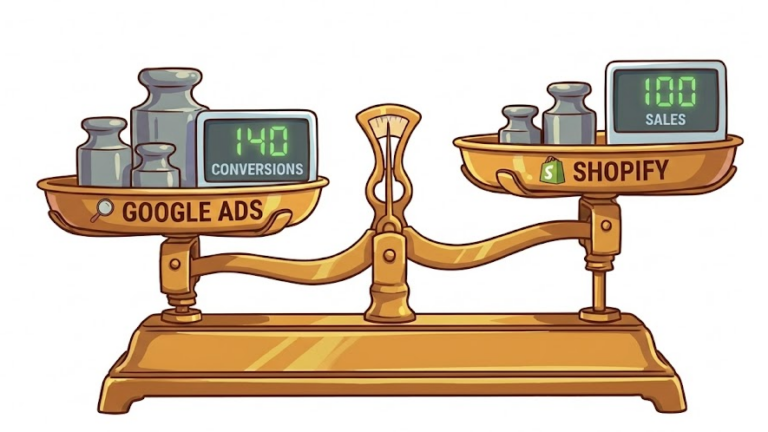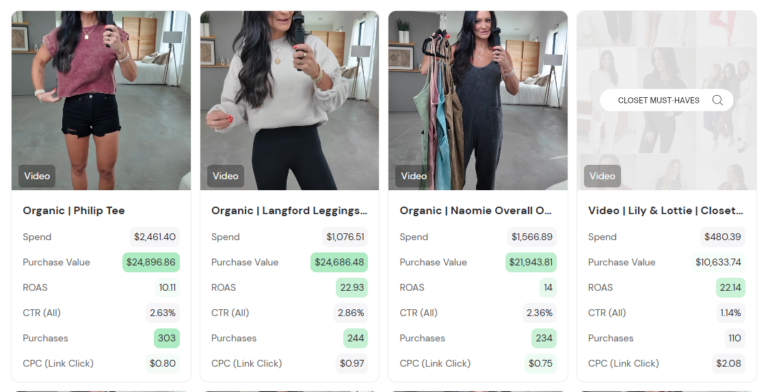Google just made online shopping way smarter, and they didn’t even make a big deal about it.
They dropped AI-powered try-ons, smarter price tracking, and an upcoming visual shopping experience that’s going to reshape how people discover and buy products. And yeah, it’s already rolling out across Search and Shopping whether you’re ready or not.
These tools are built for action, not browsing. If you’re running eCom, this stuff matters right now.
What’s Happening
Google is dialing up AI across its shopping tools to drive better decision-making, and faster conversions. These aren’t beta tests or future ideas. These features are live and evolving fast.
Here’s what’s new (and what’s coming soon):
- Virtual Try-On Is Live: U.S. users can upload a full-body image and try on clothes directly in Google Search, Shopping, and Images. It’s built for realism, not avatars.
- Smarter Price Alerts: Users can now track specific sizes, colors, and price points, not just a product in general, so notifications are actually useful.
- AI-Powered Inspiration (Coming Soon): Google’s new “AI Mode” will allow users to upload photos and get outfit or room ideas pulled from a 50+ billion product index.
These updates make Google Shopping more personalized, more visual, and way more conversion-focused. And they’re changing what shoppers expect from product listings.
Why It Matters
These new tools close the gap between discovery and purchase. They remove the guesswork, reduce hesitation, and help shoppers take action faster, and that shifts how we build, optimize, and measure campaigns.
Here’s what’s changing:
- More Confident Shoppers: Virtual try-on makes apparel decisions easier. Fewer doubts mean fewer abandoned carts.
- Stronger Intent Signals: Smarter price alerts show which users are waiting to buy, it’s a goldmine for retargeting and email strategy.
- Demand for Better Product Feeds: AI features rely on clean data and great images. Messy feeds won’t surface in visual results.
- Increased Pressure on Creative: Products that look boring or unclear won’t get clicked in an AI-optimized layout.
- New Conversion Paths: These tools keep shoppers in Google longer. Your product page might not be the first touch anymore, it might be the last.
Every update pushes toward higher personalization, better visual discovery, and fewer steps to purchase. And the bar for participation just got higher.
Next Steps
These changes aren’t optional. They’re already affecting traffic flow, product visibility, and conversion behavior. If you want to compete, here’s where to start:
- Improve Product Data Quality: Update your product feeds with clean titles, accurate variant info, and strong image assets.
- Support Virtual Try-On: Make sure apparel products meet image quality and body-type tagging requirements to show up in try-on enabled listings.
- Lean Into Price Alerts: Promote the alert option. Help users track price drops on their favorite variants, and use that intent in your remarketing.
- Get Ready for AI Mode: Build richer product descriptions and use structured data so your listings get pulled into visual discovery results.
- Track What’s Changing: Watch for spikes in branded search, changes in bounce rates, or increases in return visitors from Google Shopping.
This is Google’s next step toward intelligent, personalized shopping, and they’re not slowing down. Brands that align now will get more visibility and convert faster.
Want help updating your product strategy or aligning your feeds with Google’s latest AI shopping tools? Let’s talk, we’ll walk you through what to fix and how to get ahead before your competitors even notice what’s changed.






no replies